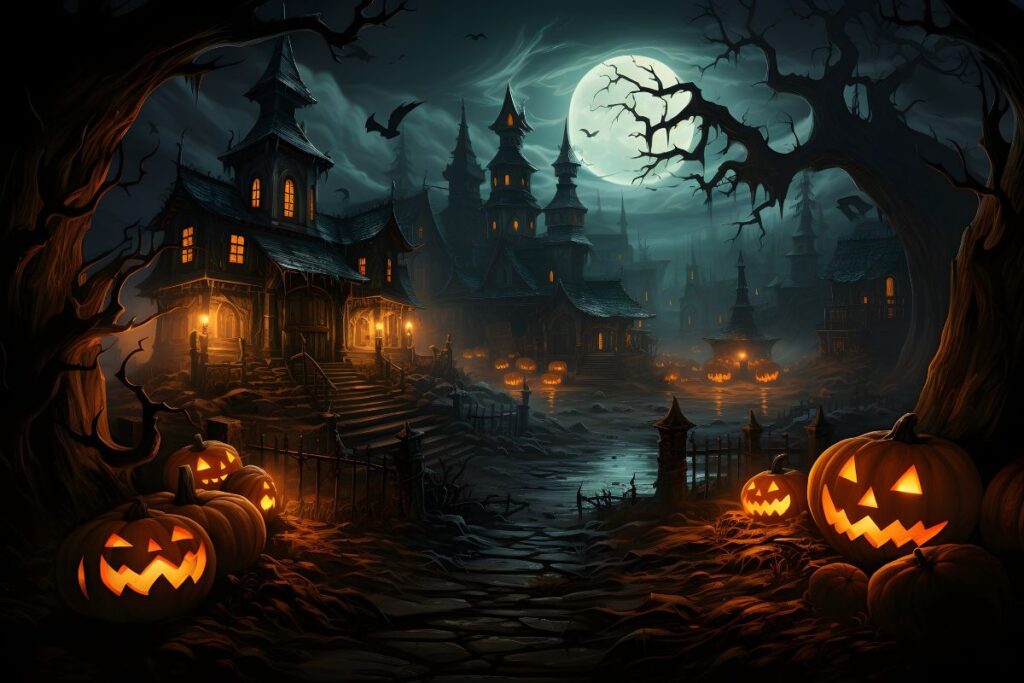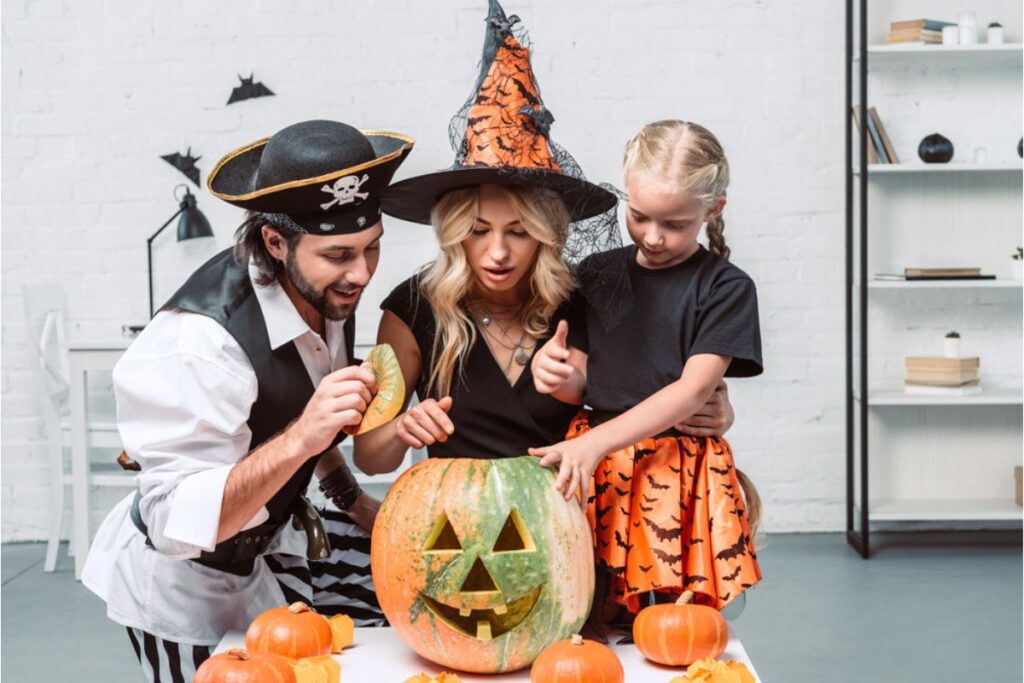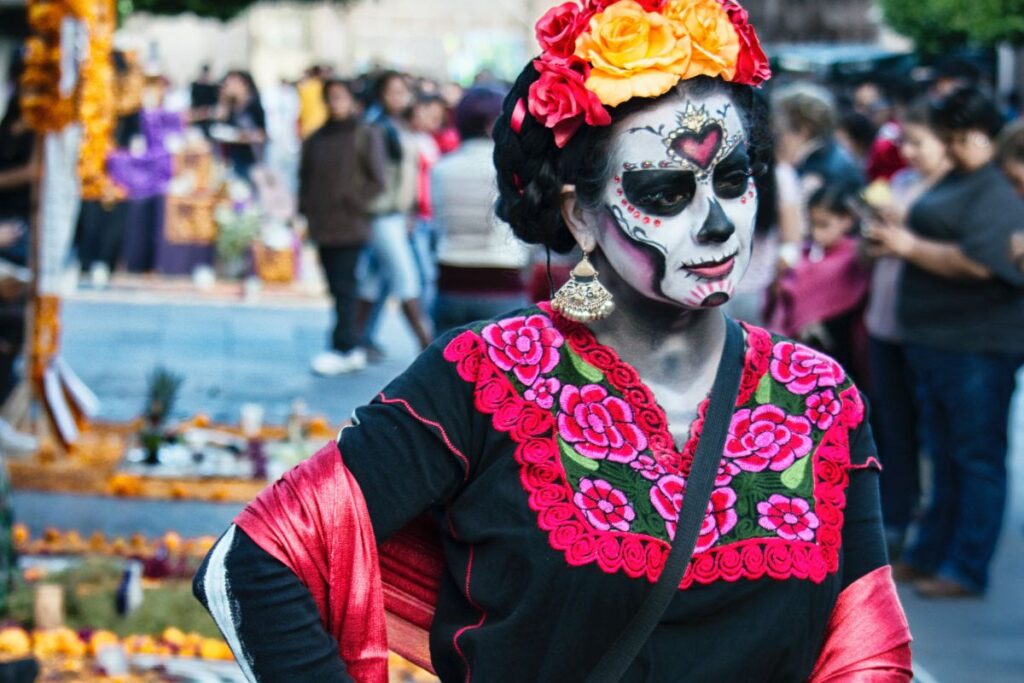O Halloween, também conhecido como “Dia das Bruxas”, é uma das festas mais aguardadas e celebradas em todo o mundo.
Esta celebração, que acontece no dia 31 de outubro, tem raízes antigas e uma história rica que combina elementos de várias culturas.
Neste artigo, exploraremos a origem do Halloween, as tradições associadas a ele e como ele se tornou um evento tão popular e fascinante.
Origem do Halloween

As origens da festa remontam a uma antiga festa celta chamada Samhain. Os celtas, que habitavam principalmente a Irlanda, o Reino Unido e o norte da França, celebravam o Samhain no final de outubro para marcar o fim da colheita e o início do inverno.
Acreditava-se que neste dia, a linha entre o mundo dos vivos e o mundo dos mortos se tornaria tênue, permitindo que espíritos e almas dos falecidos retornassem à Terra.
Com a chegada do Cristianismo na Europa, a Igreja Cristã substituiu os ambiciosos do Samhain por uma festa mais religiosa, conhecida como “Dia de Todos os Santos”, celebrada em 1º de novembro.
O dia anterior ao Dia de Todos os Santos ficou conhecido como “All Hallows’ Eve” ou “Noite de Todos os Santos”, que mais tarde se abreviou para “Halloween”.
Tradições do Halloween

Uma das tradições mais icônicas da celebração é o ato de se vestir com fantasias assustadoras. As pessoas de todas as idades fantasiam como bruxas, fantasmas, vampiros, zumbis e outros personagens assustadores.
As fantasias permitem que as pessoas se divirtam e expressem sua criatividade, ao mesmo tempo em que homenageiam a tradição de enfrentar os espíritos malignos que se acreditam vagar pela Terra nesta noite.
Além das fantasias, a decoração é uma parte fundamental do Halloween. Casas são enfeitadas com abóboras esculpidas, lanternas, teias de aranha falsas e outros elementos que evocam um ambiente assombrado.
As abóboras, em particular, são esculpidas com rostos assustadores e iluminadas com velas, criando lanternas de abóbora que são conhecidas como “Jack-o’-lanterns”.
Outra tradição popular do Halloween é a “doçura ou travessura”. Crianças vestidas com fantasias batem de porta em porta em busca de doces. Se não receberem doces, elas podem executar travessuras de folhas, como lançar ovos em uma casa ou espalhar papel higiênico no jardim.
No entanto, a tradição moderna enfatiza a parte “doçura” e a diversão, em vez da travessura real, que anima adultos e crianças por todo planeta.
Halloween ao Redor do Mundo

A festa é amplamente realizada nos Estados Unidos, onde se tornou uma das mais populares e comerciais do ano. As pessoas decoram suas casas, organizam festas temáticas e vão às ruas em busca de doces. Mas o Halloween não se limita aos Estados Unidos. Ele se manteve por muitas partes do mundo e ganhou sua própria interpretação cultural.

No México, o Dia dos Mortos, ou “Día de los Muertos”, é uma festa semelhante à que homenageia os entes queridos que já partiram. As pessoas constroem altares com fotos e objetos pessoais dos falecidos, acendem velas e preparam pratos tradicionais para homenagear as almas dos mortos.
Em alguns países europeus, como o Reino Unido e a Irlanda, as tradições do Halloween ainda mantêm fortes raízes. As pessoas continuam a esculpir abóboras, realizam festas a fantasia e acendem fogueiras.
Conclusão
O Halloween é uma festa que combina uma história rica com tradições divertidas e às vezes assustadoras. É uma oportunidade para as pessoas expressarem sua criatividade, celebrarem o mistério e a magia da noite e, claro, desfrutarem de doces deliciosos.
À medida que o Halloween continua a se espalhar para novas partes do mundo, sua natureza global e distribuída o torna celebrada uma verdade única. Então, à medida que o 31 de outubro se aproxima, prepare-se para entrar no espírito do Halloween, escolhendo sua fantasia favorita, esculpindo uma abóbora assustadora e, é claro, desfrutando de doces saborosos. Feliz Dia das Bruxas!


